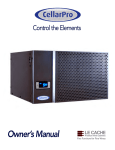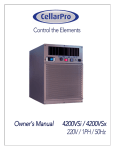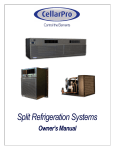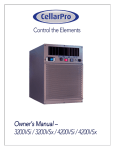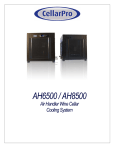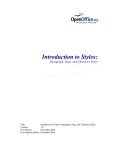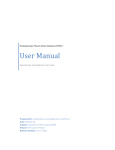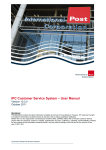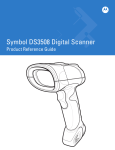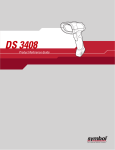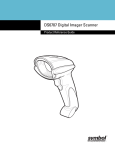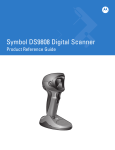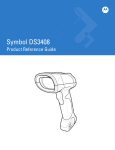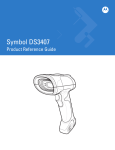Download CellarPro 1800XT 220V Owner`s manual
Transcript
CONGRATULATIONS! Thank you for purchasing a new CellarPro cooling system. Please take a minute to read through this Owner’s Manual before you unpack, install and turn on your Cooling Unit. If you have any questions about your new cooling unit, it is likely that you will find the answers in this Owner’s Manual. We also have more information on our website, including the latest version of the Owner’s Manual, at www.cellarpro.com/customerservice . If you still have questions, please don’t hesitate to contact your dealer or CellarPro directly. We can be reached during normal business hours at 1.877.726.8496. You also may contact us anytime via email at [email protected]. Contact Information: CellarPro Cooling Systems 531 Mercantile Drive Cotati, CA 94931 877.726.8496 Email: [email protected] Website: www.cellarpro.com Serial Number*: ____________________ *We recommend that you take a minute to fill-in your CellarPro serial number above. The serial number has seven-digits and can be found on the printed label on the left side of your cooling unit. Don’t forget to register your cooling unit warranty at www.cellarpro.com/register 1 [This page left blank] 2 Table of Contents I. Prior to Installation 4 II. Installation Instructions – Wine Cellars 5 III. Operating Instructions 12 IV. Troubleshooting 19 V. 22 Limited Warranty 3 I. Prior to Installation Test the unit before installing it. 1. 2. 3. 4. Remove the unit from the box. SAVE THE BOX AND PACKING MATERIALS. Remove any materials that have been packed inside the exhaust cavity Plug in the power cord and let the unit run on a hard, flat surface Check to make sure that both fans (one at the top and one at the bottom of the cooling unit) are spinning. 5. Check that the cooling unit is discharging cold air from the bottom (it should be approximately 5.6°C colder than the temperature on the digital display) Make sure that the exhaust panel is installed in the correct position – it should cover either the TOP or the REAR exhaust vent: o TOP VENT CONFIGURATION:: If the hot air will be discharged through the TOP of the cellar, install the exhaust panel on the BACK of the cooling unit (as shown in the Picture A). In this configuration, the cavity on TOP of the cooling unit is OPEN. Picture A Top Vent Configuration o REAR VENT CONFIGURATION: If the hot air will be discharged through the REAR of the cellar, use the exhaust panel to seal the TOP of the cooling unit (as shown in the Picture B). In this configuration, the cavity at the REAR of the CellarPro is OPEN. Picture B Rear Vent Configuration Wait 24 hours before operating the cooling unit. 4 II. Installation Instructions – Wine Cellars Specifications Model Dimensions (mm) WxDxH Weight (kg) Operating Amps 1800XT 457 x 419 x 267 27.2 2.0 Cooling Capacity* Estimated thermal loads for various size cellars, with various insulations, various ambient temperatures and various cellar temperatures, are shown in the table below. To figure out whether a CellarPro unit will work in your space, make sure that the cooling unit’s BTUH for a given cellar temperature is equal or greater than the thermal load shown. The bold numbers are within the capacity of both units. The unbold numbers in black are within the capacity for the 1800XT 60Hz but not for the 1800XT 50Hz. The numbers in red are beyond the capacity of both cooling units. Cellar Temp BTUH 1800XT 220V/50Hz BTUH 1800XT 230V/60Hz Cellar Insulation – All Walls, ceiling & floor*: Cellar Size Ambient Temp 23.9 °C 2.83 m3 29.4 °C 35.0 °C R-12 R-19 R-12 R-19 1034 1180 1331 946 1046 1153 889 1038 1195 814 920 1038 m3 23.9 °C 29.4 °C 35.0 °C 1313 1538 1778 1186 1349 1525 1129 1353 1500 1020 1187 1373 8.50 m3 23.9 °C 29.4 °C 35.0 °C 1594 1900 2225 1435 1562 1909 1371 1672 2003 1234 1463 1718 5.66 12.8 °C 1248 1438 15.6 °C 1353 1543 *Please note: Glass door(s) in the wine cellar have much lower insulation values than insulated walls, which will increase the heat load and therefore reduce the cooling unit’s capacity. 5 Ambient Environment CellarPro cooling units are designed to operate in ambient temperatures between 10.0°C and 29.4°C. They are designed for internal use only, and are not designed for exposure to the exterior. CellarPro cooling units are designed to maintain temperatures inside the cellar up to 16.6°C below the ambient temperature of the condenser air intake. For example, if the ambient temperature of the condenser air intake is 29.4°C, the cooling unit should be able to maintain temperatures of 12.8°C inside the cellar. Similarly, CellarPro cooling units do not have heating elements, so if temperatures inside the cellar drop below proper wine storage temperatures, the cooling unit cannot create heat inside the cellar. Proper temperatures are maintained by transferring heat from inside wine cellars and exhausting heat through the top (top-vent) or rear (rear-vent) of the cooling units. Insulation CellarPro cooling units are designed to be installed inside wine cellars that have proper insulation, moisture barriers and an airtight seal from the environment outside the cellar. Interior walls and floor should have a minimum of R-11 insulation, and a vapor barrier on the warm side of the insulation. The ceiling should have a minimum of R-19 insulation and a vapor barrier on the warm side of the insulation. Doors also should be insulated and tightly sealed with weather stripping around the perimeter of the door. Surface-mounted fixtures are recommended over recessed lighting, which can allow air to leak into the cellar. It is critical that all walls, joints, doors and windows, electrical outlets and/or switches, pipes, vents and light fixtures be sealed to prevent air and moisture from entering the cellar. If there is a leak in the cellar, the cooling unit will build up excess condensation that eventually may damage the internal components and shorten the life of the cooling unit, and may cause water to leak from the cooling unit. 6 We offer a Wine Cellar Modification for cooling units that will be installed in wine cellars (as opposed to wine cabinets.) The Wine Cellar Modification provides a fitting and condensate tube at the back of the cooling unit to relieve excess moisture that may condense inside the cooling unit. For installations in warm environments and/or cellars without airtight seals, we strongly recommend this modification. However, the modification does not replace the requirement for a cellar to have proper insulation, moisture barriers and airtight seals from the environment outside the cellar. If your cooling unit has the wine cellar modification, please make sure that the tube has a condensate trap that is slightly filled with water, as follows: As shown above, the drain line should drop, then rise (but stay below the height of the fitting), and then drop again into a drain or bucket. Then, fill the trap with water. The condensate trap will allow any excess moisture inside the cooling unit to overcome the static pressure and flow out of the drain line. 7 Installation CellarPro cooling units are designed to be installed THROUGH THE WALL. A hole should be cut 0.25”(6.4mm) larger than the dimensions (W x H) of the cooling unit. Horizontal braces should be installed between the studs below and above the cooling unit. If the studs in the wall must be cut to accommodate the width of the cooling unit, vertical braces also should be installed on either side of the cooling unit. CellarPro cooling units must always be mounted in the upright position and located as close to the ceiling as possible inside the cellar. As warm air rises to the top of the cellar, the cooling unit pulls the warm air through the evaporator coils and removes the heat from the warm air. Once cooled, the cold air is discharged from the bottom of the cooling unit and circulates downward through the cellar. The rear of the cooling unit should be slightly lower than the front of the cooling unit (ie the cooling unit should be tilted backwards slightly), so that excess condensation won’t drip through the evaporator fan cavity. The rear of the cooling unit should be supported by the wall through which it is installed, and should be flush with the wall. Assuming 4.5”(114mm) interior wall thickness, the front 12”(305mm) will be inside the cellar. The front of the cooling unit can be mounted using optional mounting clips (available for purchase from CellarPro), as follows: 8 Alternatively, the front of the cooling unit can be supported by a shelf and a diagonal brace. The shelf can be up to 13.25”(337mm) inches wide, and should be positioned on the right side of the cooling unit so that it doesn’t restrict the exhaust vent below the cooling unit, as follows: Once the cooling unit is installed, all cracks and gaps between the cooling unit and the cellar should be sealed. We provide butyl tape (shipped in the cavity of the exhaust vent) for sealing these gaps. The butyl tape becomes pliable by rolling it in your hands. Pay particular attention to the seams on the back of the cellar (top and rear vent configurations) and the seams at the top of the cellar (top-vent configuration). 9 Ventilation OUTSIDE THE CELLAR Proper ventilation is critically important for the proper operation of your CellarPro cooling unit. The CellarPro cooling unit creates a significant amount of hot air, which must be exhausted into an appropriately-sized space in order for the heat to dissipate. If the space is constrained and/or too small, the heat will not dissipate and the cooling unit will end up recirculating hot air. If this happens, the cooling unit’s ability to create cold air inside the cellar will be compromised. 1. Condenser Air Intake. The condenser coils are located at the rear of the cooling unit. These coils require access to cool air in order for the cooling unit to produce cool air. In general, the cooling unit will be able to produce cold air that is 16.6°C below the temperature of the condenser air intake. The cooling unit must be installed so that, after its installation, there is access to the condenser coils at the rear of the cooling unit for periodic cleaning of the coils. 2. Condenser Air Exhaust. Condenser air can be exhausted either through the top or the rear of the cooling unit. CellarPro units have interchangeable vent panels that can be swapped between the top and the rear of the cooling unit to match the configuration of your cellar and exhaust space. The hot air exhaust cannot be ducted without an inline fan to augment the airflow inside the duct. Rear vent configuration (most common): in this configuration, the panel is attached to the top of the cooling unit and hot air is freely exhausted from the rear of the cooling unit into the exhaust space, which should have the same space capacity as the wine cellar. (eg, if the cellar is 8.50 m3, the exhaust space also should be 8.50 m3.)In addition, this configuration should have 102-152mm of unobstructed clearance directly behind the cellar. Top-vent configuration (less common): in this configuration, the panel is attached to the rear of the cooling unit and hot air is freely exhausted from the top of the cooling unit into the exhaust space. If the exhaust space is shared with the rear of the cooling unit, it should have the same space capacity as the wine cellar (eg, if the cellar is 8.50 m3, the exhaust space also should be 8.50 m3.). INSIDE THE CELLAR CellarPro cooling units are designed to turn on when the temperature near the ceiling inside the cellar exceeds the Minimum Set Point plus the Temperature Differential, and turn off when the temperature inside the cellar drops below the Minimum Set Point. The Minimum Set Point and Temperature Differential can be set according to instructions in the following Chapter. For example, if the Minimum Set Point is 14.4°C and the Temperature Differential is 2.2°C, the cooling unit will turn on when 10 the temperature inside the cellar rises above 16.6°C, and turn off when the temperature falls below 14.4°C. In this example, the average temperature inside the cellar will be 15.6°C. 1. Evaporator Air Intake. The evaporator coils are located on the face of the cooling unit behind the grill. CellarPro cooling units are designed to be mounted at the highest point inside wine cellars, so that warm air – which rises – will be the first to pass over the evaporator coils, which will remove the heat from the air. To ensure proper airflow, a minimum of 3”(76mm) clearance is required in front of the cooling unit. 2. Evaporator Air Exhaust. Cold air is exhausted through the bottom of the cooling unit. Because CellarPro cooling units are located at the highest point inside wine cellars, the cold air will fall to the bottom of the cellar. To ensure proper airflow and reduce temperature stratification inside the cellar, the space below the cold air discharge should be clear of any obstructions, including wine bottles, wine racks, etc. Power Requirements CellarPro 1800XT 220V cooling systems should be plugged into an outlet connected to a 15-amp circuit. These cooling units can be used in 187-254V single-phase environments at 50Hz, and 198-254V single-phase environments at 60Hz. The cooling unit uses approximately 2.0 amps during its “on” cycle. The power plug provided is Nema 6-15P 15A 250V Plug (Male), with a screw cover plug housing and internal lug connections that can be swapped to conform to local plug configurations. A number of variables, including the minimum set point, the temperature in the ambient environment, the insulation of the cellar, and the thermal mass inside the cellar, will affect the cooling unit’s runtime. It is normal for the cooling unit to run up to 75 percent of the time in order to maintain proper conditions inside the cellar. Summary Consider the following guidelines before purchasing a CellarPro wine cooling unit: If the cellar is too large for the cooling unit, the cooling unit will be unable to maintain proper, even temperatures throughout the cellar. Without proper insulation and an airtight environment, the cooling unit effectively will become a de-humidifier and potentially will produce buckets of water. Without access to cool air, either because of improper ventilation or environments that are too hot, the cooling unit will be unable to maintain proper temperatures inside the cellar. Under these conditions, the unit’s internal components may become damaged, the expected useful life of the wine cooling unit may be adversely affected, and the product’s warranty may become null and void. 11 III. Operating Instructions Overview Please follow the instructions in Chapter I prior to turning on your CellarPro cooling unit. CellarPro cooling units are designed to maintain optimal conditions for wine storage and aging. These conditions include steady, cool temperatures, high humidity, minimal vibration and light, and clean air. The settings on your CellarPro cooling unit have been preset and optimized by the factory. Before changing any settings below, we recommend waiting 14 days to allow the cooling unit to “break in.” The cooling unit is designed to cool the cellar gently without stripping moisture out of the cellar environment. Therefore, it is not uncommon for the cooling unit to run nonstop for up to a week initially, depending on the temperature inside the cellar, the size of the cellar, and the temperature of the ambient environment. Once the cellar has reached equilibrium, it is normal for the cooling unit to run as much as 75 percent of the time. CellarPro cooling units are designed to maintain optimal temperatures for storing and aging fine wine. CellarPro cooling units are not designed to maintain temperatures for serving wine, which tend to be much colder than storage temperatures, especially serving temperatures for white and sparkling wines. CellarPro cooling units must be used, stored, moved and/or shipped in the upright position. Be careful when turning the unit on its side. The unit NEVER should be turned upside down. 12 Basic Operation The temperature inside the cellar can be increased or decreased by changing the Minimum Set Point as described later in this chapter. If the cooling unit runs too much, you can raise the Minimum Set Point to reduce the cycle “on” time. Most wine collectors store their wine in the range of 12.8 - 15.6°C. CellarPro cooling units are designed to maintain appropriate levels of humidity, ranging from 50 to 70 percent, inside wine cellars. In order to increase or decrease humidity inside the cellar, the Fon setting can be changed as described in the “Advanced Operation” section later in this chapter. Digital Display The temperature displayed on the control indicates the real-time air temperature as measured by Probe 1 (P1) located behind the front grill of the cooling unit 13 Power On/Off Button Press “Power On/Off” to turn the unit on and off When the “Compressor On” indicator light is on, the Compressor is running. When the “Fan On” indicator light is on, the Fan is running Up and Down Buttons To view the “High Temp” recorded by the cooling unit, press the “Up” button once. To view the “Low Temp” recorded by the cooling unit, press the “Down” button once To reset the “High Temp” or “Low Temp”, press the “Set” button for three seconds while “Hi” or “Lo” is displayed. “RST” will blink three times to indicate confirmation. Set Button The cooling unit is factory preset with a Minimum Set Point of 14.4°C and a Temperature Differential of 2.2°C. This means that the cooling unit will turn on when the display rises above 16.6°C (14.4°C + 2.2°C), and turn off when the display falls below 14.4°C. In this example, the average temperature inside the cellar will be 15.6°C. To view the Minimum Set Point, press the “Set” button for one second. To change the Minimum Set Point, 1. Press the “Set” button for three seconds until “°C” blinks 2. Press the “Up” or “Down” button 3. Press the “Set” button to confirm The “Set” temperature will blink three times to indicate confirmation. The recommended Minimum Set Point range is 11.7 – 15.6°C. To change the Temperature Differential, see “Advanced Operation” later in this chapter. 14 Energy Saver Button To activate and deactivate the “Energy Saver” mode, press the “Energy Saver” button The “Energy Saver” indicator light will turn on when the cooling unit is in “Energy Saver” mode In “Energy Saver” mode, the Minimum Set Point increases 2.2°C and the Temperature Differential is unchanged Quick Chill Button To activate the “Quick Chill” mode, press the “Up” / “Quick Chill” button for three seconds To deactivate “Quick Chill”, press “Quick Chill” button for three seconds again The “Quick Chill” indicator light will turn on when the cooling unit is in “Quick Chill” mode In the “Quick Chill” mode, the cooling unit will run continuously for 6 hours (or until the intake temperature registers 10.0°C). This mode is useful after loading “warm” bottles in a cellar 15 Advanced Operation CellarPro cooling systems can be programmed with advanced settings to achieve more control over conditions inside the cellar. Conditions like humidity, the Temperature Differential, and alarm settings all can be modified for custom applications. To access the advanced settings, do the following: Press the “Set” button and the “Down” button together at the same time, and hold for three seconds. Then, use the “Up” or “Down” button to scroll to the following screen: HUMIDITY: The factory preset for this setting is “3”. If the humidity inside the cellar is too low, press the “Set” button, then use the “Up” button until the desired setting is reached. The recommended range for this setting is 0-6. TEMPERATURE DIFFERENTIAL: The factory preset for this setting is “2.2”. This setting determines the Temperature Differential and therefore the temperature at which the cooling unit will cycle on. The recommended range for this setting is 2.2 or 2.8. HIGH TEMPERATURE ALARM: The factory preset for this setting is “21.1”. This setting designates the High temperature inside the cellar at which the alarm is triggered. We recommend leaving this setting at the factory preset. LOW TEMPERATURE ALARM: The factory preset for this setting is “7.2”. This setting designates the Low temperature inside the cellar at which the alarm is triggered. We recommend leaving this setting at the factory preset. ENERGY SAVINGS MODE DIFFERENTIAL: preset for this setting is “2.2”. The factory This setting increases or decreases the Temperature Differential for the Energy Savings Mode. The recommended range for this setting is 1.1-2.2. 16 Standard Protection Mechanisms The cooling unit is programmed to shut down certain components to protect those components, as well as the wine inside the cellar, under the following circumstances: Scenario What it means What happens P1 Alarm Probe 1, which senses the temperature inside the cellar and controls the on/off cycles of the cooling unit, has failed The cooling unit enters a timed auto-cycle mode until Probe 1 is repaired or replaced. In this mode, the cooling unit will turn for 12 minutes and off for 8 minutes. Optional Protection Mechanisms CellarPro cooling systems can be programmed to turn off the compressor and condenser fan in the event of an HA2 alarm, as described below. If you’d like to turn on this protection mechanism, please call us toll-free at 877.726.8496 P3 > 60°C for more than 2 hours The condenser probe is measuring temperatures that are too hot The compressor and condenser fan will turn off until the condenser temperature falls below 60°C Maintenance The condenser coils at the back of the cooling unit will collect dust, dirt and lint over time. It is critically important to clean the coils periodically. If the condenser coils become clogged, the cooling unit will not have proper airflow and its performance and longevity will be compromised. To clean the coils, simply vacuum or brush the coils until all dust and lint have been removed. Do not use compressed air to clean the coils because it may force dirt particles into the cooling system and cause serious damage to its internal components. 17 Alarms The cooling unit has both an audible notification and a visual alarm indicator (shown in “red” on the control panel) that are activated when an alarm is triggered. Please note: the temperature alarms (HA, HA2, LA and LA2) are disabled during the first 23 hours of operation after the cooling unit is plugged in and/or turned on. The control panel also will flash a code for each alarm, as follows: Alarm Code What it means What to do P1, P2, P3 Probe Failure Call CellarPro at 877.726.8496 HA The temperature inside Check seals; the cellar is too warm Check if door was left open; (above 21.1°C for more Lower the ambient temperatures than 1 hour) HA2 The condenser temperature is too high (above 60°C for 2 hours) Check for appropriate installation, ventilation, ambient conditions and cooling capacity (Chapter II) Clean the condenser coils (see “Maintenance” in Chapter IV); Check for obstructions to the intake and/or exhaust vents; Check that the condenser fan is operating LA The temperature inside the cellar is too cold (below 7.2°C) Raise the ambient temperature; Raise the “Minimum Set Point” LA2 The temperature at the condenser coils (outside the cabinet) has dropped below the alarm temperature setting Lower the alarm temperature setting as follows: 1. Depress the “Set” and “Down” button for three seconds until the display reads “HY” 2. Depress the “Set” and “Down” button for seven seconds until “PR2” flashes on the display 3. Using the “Down” button, scroll until the display reads “AL2” 4. Depress the “Set” button and lower the alarm temperature setting to your desired setting 18 IV. Troubleshooting The Cooling Unit Runs Constantly The cooling capacity of the cooling unit depends on the thermal load on the wine cellar, and the resulting BTU that is required to cool and maintain the cellar at the desired temperature. The cooling capacities of both units are shown on page 2. If the thermal load exceeds the capacity of the cooling unit, you will need to add insulation and/or raise the set point on the cooling unit. The cooling unit is designed to turn on when the air temperature in the cellar rises ABOVE the Minimum Set Point + Temperature Differential, and turn off when the air temperature falls below the Minimum Set Point. For example, if the Minimum Set Point is 14.4°C and the Temperature Differential is 2.2°C, the cooling unit will turn on above 16.6°C and turn off below 14.4°C. In this example, the average temperature inside the cellar will be 15.6°C. When bottles are first loaded in the cellar, the cooling unit will run continuously (even up to a week) until the temperature inside the cellar falls below the Set Point. After the temperatures inside the wine cellar reach equilibrium, the cooling unit will run anywhere from 30 to 50 minutes in a given hour, depending on the thermal load and the set point. Hot weather conditions, insufficient insulation, inadequate ventilation, mis-sized cellar capacity and/or dirty condenser coils can all cause the cooling unit to run continuously. If your CellarPro wine cooling unit runs constantly, try the following: Make sure that both fans are spinning Clean the condenser coils Make sure that the cooling unit is NOT in Energy-Saver Mode Check that the thermal load in Chapter II isn’t overwhelming the cooling unit Increase the supply of cool air to the space outside the condenser coils, using a fan, ducting or an exhaust system to remove heat from the space. Raise the Minimum Set Point on the cooling unit If you continue to have problems, please complete our Cooling Unit Troubleshooting Inquiry Form ((found online) and we'll respond by the next business day. 19 The Cooling Unit Is Dripping The cooling unit is designed to remove excess moisture from inside the cellar, which collects in the drip pan of the cooling unit. Excess moisture can occur when the cooling unit runs constantly, when the Minimum Set Point is too low and/or when the cellar doesn’t have a good seal from the outside environment. To eliminate overflow in the drip pan, do the following: 1. Raise the Minimum Set Point of the cooling unit to 14.4°C or above. 2. Make sure the cellar has good seals, especially at the door(s), and repair any leaks immediately. 3. If your wine cooling unit came with a condensate fitting and drain line, make sure you properly setup the condensate trap (Chapter II). If the cooling unit continues to drip, contact us at 1.877.726.8496 for further assistance. The HA2 Alarm has been triggered The cooling unit is designed to measure the temperature of the condenser coils and, if the temperature exceeds 60°C for more than 2 hours, the HA2 alarm will display on the control panel. If this alarm happens when you first receive and start operating your CellarPro cooling unit, check for appropriate installation and ventilation (Chapter II). Also, make sure that there aren’t any obstructions to the intake and/or exhaust vents. If your wine cabinet has a grill, remove the grill and/or any other obstructions above (top vent) or behind (back vent) the cellar. If the alarm happens in conjunction with hot ambient conditions, we recommend doing the following: 1. Raise the Minimum Set Point to 15.6°C until temperatures cool down 2. Increase the Fon setting If the cooling has been operating for several months without any problems and the alarm happens “out of the blue”, check the condenser coils and clean if necessary. If the HA2 alarm continues to be triggered, contact us at 1.877.726.8496 for further assistance. 20 The LA2 Alarm has been triggered As noted above, the cooling unit is designed to measure the temperature of the condenser coils and, if the temperature drops below a certain point, the LA2 alarm will display on the control panel. To reduce the alarm temperature setting, do the following: 1. Depress the “Set” and “Down” button for three seconds until the display reads “HY” 2. Depress the “Set” and “Down” button (again) for seven seconds until “PR2” flashes on the display 3. Using the “Down” button, scroll until the display reads “AL2” 4. Depress the “Set” button and lower the alarm temperature setting to your desired temperature 21 V. Limited Warranty For two years from the date of purchase, your CellarPro warranty covers all parts and labor to repair or replace any components in the wine cooling unit that prove to be defective in materials or workmanship. Under the terms of this warranty, CellarPro will repair or replace the original cooling unit with a new or refurbished cooling unit and, once replaced, the original cooling unit must be returned to CellarPro. All service provided by CellarPro under the above warranty must be performed by CellarPro or a designated repair facility unless otherwise specified by CellarPro. Purchaser is responsible for shipping the wine cooling unit to and from CellarPro or to and from a designated repair facility, and for removing and reinstalling the wine cooling unit from the wine cellar. The limited warranty applies only to wine cooling units purchased from the factory or an authorized dealer. Damage caused by others or by any cause beyond the control of CellarPro, shall not be considered defects in material or workmanship and are not covered by the warranty. The limited warranty does not cover any parts or labor to correct any defect caused by negligence, commercial use, accident, or improper use, maintenance, installation, service or repair. THE REMEDIES DESCRIBED ABOVE FOR EACH WARRANTY ARE THE ONLY ONES, WHICH CELLARPRO WILL PROVIDE, EITHER UNDER THESE WARRANTIES OR UNDER ANY WARRANTY ARISING BY OPERATION OF LAW. CELLARPRO WILL NOT BE RESPONSIBLE FOR ANY CONSEQUENTIAL OR INCIDENTAL DAMAGES ARISING FROM THE BREACH OF THESE WARRANTIES OR ANY OTHER WARRANTIES, WHETHER EXPRESS, IMPLIED OR STATUTORY. Some states do not allow the exclusion or limitation of incidental or consequential damages, so the above limitation or exclusion may not apply to you. This warranty gives you specific legal rights and you may also have other legal rights, which vary from state to state. To receive parts and/or service and the name of a CellarPro designated repair facility nearest you, contact your CellarPro dealer. You may also contact CellarPro directly by calling us at 1.877.726.8496. 22























